- Home
- Michael Pollan
Cooked: A Natural History of Transformation Page 2
Cooked: A Natural History of Transformation Read online
Page 2
This is a problem—for the health of our bodies, our families, our communities, and our land, but also for our sense of how our eating connects us to the world. Our growing distance from any direct, physical engagement with the processes by which the raw stuff of nature gets transformed into a cooked meal is changing our understanding of what food is. Indeed, the idea that food has any connection to nature or human work or imagination is hard to credit when it arrives in a neat package, fully formed. Food becomes just another commodity, an abstraction. And as soon as that happens we become easy prey for corporations selling synthetic versions of the real thing—what I call edible foodlike substances. We end up trying to nourish ourselves on images.
Now, for a man to criticize these developments will perhaps rankle some readers. To certain ears, whenever a man talks about the importance of cooking, it sounds like he wants to turn back the clock, and return women to the kitchen. But that’s not at all what I have in mind. I’ve come to think cooking is too important to be left to any one gender or member of the family; men and children both need to be in the kitchen, too, and not just for reasons of fairness or equity but because they have so much to gain by being there. In fact, one of the biggest reasons corporations were able to insinuate themselves into this part of our lives is because home cooking had for so long been denigrated as “women’s work” and therefore not important enough for men and boys to learn to do.
Though it’s hard to say which came first: Was home cooking denigrated because the work was mostly done by women, or did women get stuck doing most of the cooking because our culture denigrated the work? The gender politics of cooking, which I explore at some length in part II, are nothing if not complicated, and probably always have been. Since ancient times, a few special types of cooking have enjoyed considerable prestige: Homer’s warriors barbecued their own joints of meat at no cost to their heroic status or masculinity. And ever since, it has been socially acceptable for men to cook in public and professionally—for money. (Though it is only recently that professional chefs have enjoyed the status of artists.) But for most of history most of humanity’s food has been cooked by women working out of public view and without public recognition. Except for the rare ceremonial occasions over which men presided—the religious sacrifice, the July 4 barbecue, the four-star restaurant—cooking has traditionally been women’s work, part and parcel of homemaking and child care, and therefore undeserving of serious—i.e., male—attention.
But there may be another reason cooking has not received its proper due. In a recent book called The Taste for Civilization, Janet A. Flammang, a feminist scholar and political scientist who has argued eloquently for the social and political importance of “food work,” suggests the problem may have something to do with food itself, which by its very nature falls on the wrong side—the feminine side—of the mind-body dualism in Western culture.
“Food is apprehended through the senses of touch, smell, and taste,” she points out, “which rank lower on the hierarchy of senses than sight and hearing, which are typically thought to give rise to knowledge. In most of philosophy, religion, and literature, food is associated with body, animal, female, and appetite—things civilized men have sought to overcome with knowledge and reason.”
Very much to their loss.
II.
The premise of this book is that cooking—defined broadly enough to take in the whole spectrum of techniques people have devised for transforming the raw stuff of nature into nutritious and appealing things for us to eat and drink—is one of the most interesting and worthwhile things we humans do. This is not something I fully appreciated before I set out to learn how to cook. But after three years spent working under a succession of gifted teachers to master four of the key transformations we call cooking—grilling with fire, cooking with liquid, baking bread, and fermenting all sorts of things—I came away with a very different body of knowledge from the one I went looking for. Yes, by the end of my education I got pretty good at making a few things—I’m especially proud of my bread and some of my braises. But I also learned things about the natural world (and our implication in it) that I don’t think I could have learned any other way. I learned far more than I ever expected to about the nature of work, the meaning of health, about tradition and ritual, self-reliance and community, the rhythms of everyday life, and the supreme satisfaction of producing something I previously could only have imagined consuming, doing it outside of the cash economy for no other reason but love.
This book is the story of my education in the kitchen—but also in the bakery, the dairy, the brewery, and the restaurant kitchen, some of the places where much of our culture’s cooking now takes place. Cooked is divided into four parts, one for each of the great transformations of nature into the culture we call cooking. Each of these, I was surprised and pleased to discover, corresponds to, and depends upon, one of the classical elements: Fire, Water, Air, and Earth.
Why this should be so I am not entirely sure. But for thousands of years and in many different cultures, these elements have been regarded as the four irreducible, indestructible ingredients that make up the natural world. Certainly they still loom large in our imagination. The fact that modern science has dismissed the classical elements, reducing them to still more elemental substances and forces—water to molecules of hydrogen and oxygen; fire to a process of rapid oxidation, etc.—hasn’t really changed our lived experience of nature or the way we imagine it. Science may have replaced the big four with a periodic table of 118 elements, and then reduced each of those to ever-tinier particles, but our senses and our dreams have yet to get the news.
To learn to cook is to put yourself on intimate terms with the laws of physics and chemistry, as well as the facts of biology and microbiology. Yet, beginning with fire, I found that the older, prescientific elements figure largely—hugely, in fact—in apprehending the main transformations that comprise cooking, each in its own way. Each element proposes a different set of techniques for transforming nature, but also a different stance toward the world, a different kind of work, and a different mood.
Fire being the first element (in cooking anyway), I began my education with it, exploring the most basic and earliest kind of cookery: meat, on the grill. My quest to learn the art of cooking with fire took me a long way from my backyard grill, to the barbecue pits and pit masters of eastern North Carolina, where cooking meat still means a whole pig roasted very slowly over a smoldering wood fire. It was here, training under an accomplished and flamboyant pit master, that I got acquainted with cooking’s primary colors—animal, wood, fire, time—and found a clearly marked path deep into the prehistory of cooking: what first drove our protohuman ancestors to gather around the cook fire, and how that experience transformed them. Killing and cooking a large animal has never been anything but an emotionally freighted and spiritually charged endeavor. Rituals of sacrifice have attended this sort of cooking from the beginning, and I found their echoes reverberating even today, in twenty-first-century barbecue. Then as now, the mood in fire cooking is heroic, masculine, theatrical, boastful, unironic, and faintly (sometimes not so faintly) ridiculous.
It is in fact everything that cooking with water, the subject of part II, is not. Historically, cooking with water comes after cooking with fire, since it awaited the invention of pots to cook in, an artifact of human culture only about ten thousand years old. Now cooking moves indoors, into the domestic realm, and in this chapter I delve into everyday home cookery, its techniques and satisfactions as well as its discontents. Befitting its subject, this section takes the shape of a single long recipe, unfolding step by step the age-old techniques that grandmothers developed for teasing delicious food
from the most ordinary of ingredients: some aromatic plants, a little fat, a few scraps of meat, a long afternoon around the house. Here, too, I apprenticed myself to a flamboyant professional character, but she and I did most of our cooking at home in my kitchen, and often as a family—home and family being very much the subject of this section.
Part III takes up the element of air, which is all that distinguishes an exuberantly leavened loaf of bread from a sad gruel of pulverized grain. By figuring out how to coax air into our food, we elevate it and ourselves, transcending, and vastly improving, what nature gives us in a handful of grass seed. The story of Western civilization is pretty much the story of bread, which is arguably the first important “food processing” technology. (The counterargument comes from the brewers of beer, who may have gotten there first.) This section, which takes place in several different bakeries across the country (including a Wonder Bread plant), follows two personal quests: to bake a perfect, maximally airy and wholesome loaf of bread, and to pinpoint the precise historical moment that cooking took its fatefully wrong turn: when civilization began processing food in such a way as to make it less nutritious rather than more.
Different as they are, these first three modes of cooking all depend on heat. Not so the fourth. Like the earth itself, the various arts of fermentation rely instead on biology to transform organic matter from one state to a more interesting and nutritious other state. Here I encountered the most amazing alchemies of all: strong, allusive flavors and powerful intoxicants created for us by fungi and bacteria—many of them the denizens of the soil—as they go about their invisible work of creative destruction. This section falls into three chapters, covering the fermentation of vegetables (into sauerkraut, kimchi, pickles of all kinds); milk (into cheese); and alcohol (into mead and beer). Along the way, a succession of “fermentos” tutored me in the techniques of artfully managing rot, the folly of the modern war against bacteria, the erotics of disgust, and the somewhat upside-down notion that, while we were fermenting alcohol, alcohol has been fermenting us.
I have been fortunate in both the talent and the generosity of the teachers who agreed to take me in—the cooks, bakers, brewers, picklers, and cheese makers who shared their time and techniques and recipes. This cast of characters turned out to be a lot more masculine than I would have expected, and a reader might conclude that I have indulged in some unfortunate typecasting. But as soon as I opted to apprentice myself to professional rather than amateur cooks—in the hopes of acquiring the most rigorous training I could get—it was probably inevitable that certain stereotypes would be reinforced. It turns out that barbecue pit masters are almost exclusively men, as are brewers and bakers (except for pastry chefs), and a remarkable number of cheese makers are women. In learning to cook traditional pot dishes, I chose to work with a female chef, and if by doing so I underscored the cliché that home cooking is woman’s work, that was sort of the idea: I wanted to delve into that very question. We can hope that all the gender stereotypes surrounding food and cooking will soon be thrown up for grabs, but to assume that has already happened would be to kid ourselves.
Taken as a whole, this is a “how-to” book, but of a very particular kind. Each section circles around a single elemental recipe—for barbecue, for a braise, for bread, and for a small handful of fermented items—and by the end of it, you should be well enough equipped to make it. (The recipes are spelled out more concisely in appendix I, in case you do want to try any of them.) Though all the cooking I describe can be done in a home kitchen, only a portion of the book deals directly with the kind of work most people regard as “home cooking.” Several of the recipes here are for things most readers will probably never make themselves—beer, for example, or cheese, or even bread. Though I hope that they will. Because I discovered there was much to learn from attempting, even if only just once, these more ambitious and time-consuming forms of cookery, knowledge that might not at first seem terribly useful but in fact changes everything about one’s relationship to food and what is possible in the kitchen. Let me try to explain.
At bottom cooking is not a single process but, rather, comprises a small set of technologies, some of the most important humans have yet devised. They changed us first as a species, and then at the level of the group, the family, and the individual. These technologies range from the controlled used of fire to the manipulation of specific microorganisms to transform grain into bread or alcohol all the way to the microwave oven—the last major innovation. So cooking is really a continuum of processes, from simple to complex, and Cooked is, among other things, a natural and social history of these transformations, both the ones that are still part of our everyday lives and the ones that are not. Today, we’re apt to think of making cheese or brewing beer as “extreme” forms of cookery, only because so few of us have ever attempted them, but of course at one time all these transformations took place in the household and everyone had at least a rudimentary knowledge of how to perform them. Nowadays, only a small handful of cooking’s technologies seem within the reach of our competence. This represents not only a loss of knowledge, but a loss of a kind of power, too. And it is entirely possible that, within another generation, cooking a meal from scratch will seem as exotic and ambitious—as “extreme”—as most of us today regard brewing beer or baking a loaf of bread or putting up a crock of sauerkraut.
When that happens—when we no longer have any direct personal knowledge of how these wonderful creations are made—food will have become completely abstracted from its various contexts: from the labor of human hands, from the natural world of plants and animals, from imagination and culture and community. Indeed, food is already well on its way into that ether of abstraction, toward becoming mere fuel or pure image. So how might we begin to bring it back to earth?
My wager in Cooked is that the best way to recover the reality of food, to return it to its proper place in ours lives, is by attempting to master the physical processes by which it has traditionally been made. The good news is that this is still within our reach, no matter how limited our skills in the kitchen. My own apprenticeship necessitated a journey far beyond my own kitchen (and comfort zone), to some of the farther reaches of cookery, in the hopes of confronting the essential facts of the matter, and discovering exactly what it is about these transformations that helped make us who we are. But perhaps my happiest discovery was that the wonders of cooking, even its most ambitious manifestations, rely on a magic that remains accessible to all of us, at home.
I should add that the journey has been great fun, probably the most fun I’ve ever had while still ostensibly “working.” What is more gratifying, after all, than discovering you can actually make something delicious (or intoxicating) that you simply assumed you’d always have to buy in the marketplace? Or finding yourself in that sweet spot where the frontier between work and play disappears in a cloud of bread flour or fragrant steam rising from a boiling kettle of wort?
Even in the case of the seemingly most impractical cooking adventures, I learned things of an unexpectedly practical value. After you’ve tried your hand at brewing or pickling or slow roasting a whole hog, everyday home cooking becomes much less daunting, and in certain ways easier. My own backyard barbecuing has been informed and improved by my hours hanging around the barbecue pit. Working with bread dough has taught me how to trust my hands and my senses in the kitchen, and to have enough confidence in their reporting to free me from the bonds of recipe and measuring cup. And having spent time in the bakeries of artisans as well as in a Wonder Bread factory, my appreciation for a good loaf of bread has grown much more keen. Same for a wedge of cheese or bottle of beer: What had always been just products, good or bad, now
reveal themselves as so much more than that—as achievements, as expressions, as relationships. By itself, this added increment of eating and drinking pleasure would have been enough to justify all the so-called work.
But perhaps the most important thing I learned by doing this work is how cooking implicates us in a whole web of social and ecological relationships: with plants and animals, with the soil, with farmers, with the microbes both inside and outside our bodies, and, of course, with the people our cooking nourishes and delights. Above all else, what I found in the kitchen is that cooking connects.
Cooking—of whatever kind, everyday or extreme—situates us in the world in a very special place, facing the natural world on one side and the social world on the other. The cook stands squarely between nature and culture, conducting a process of translation and negotiation. Both nature and culture are transformed by the work. And in the process, I discovered, so is the cook.
III.
As I grew steadily more comfortable in the kitchen, I found that, much like gardening, most cooking manages to be agreeably absorbing without being too demanding intellectually. It leaves plenty of mental space for daydreaming and reflection. One of the things I reflected on is the whole question of taking on what in our time has become, strictly speaking, optional, even unnecessary work, work for which I am not particularly gifted or qualified, and at which I may never get very good. This is, in the modern world, the unspoken question that hovers over all our cooking: Why bother?
By any purely rational calculation, even everyday home cooking (much less baking bread or fermenting kimchi) is probably not a wise use of my time. Not long ago, I read an Op Ed piece in The Wall Street Journal about the restaurant industry, written by the couple that publishes the Zagat restaurant guides, which took exactly this line. Rather than coming home after work to cook, the Zagats suggested, “people would be better off staying an extra hour in the office doing what they do well, and letting bargain restaurants do what they do best.”

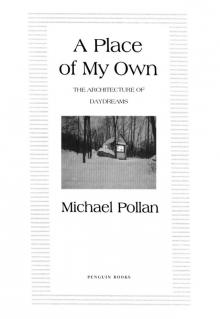 A Place of My Own: The Education of an Amateur Builder
A Place of My Own: The Education of an Amateur Builder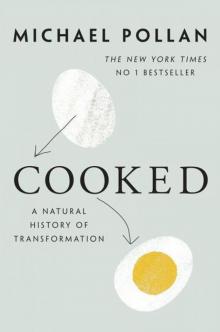 Cooked: A Natural History of Transformation
Cooked: A Natural History of Transformation The Omnivore's Dilemma
The Omnivore's Dilemma How to Change Your Mind
How to Change Your Mind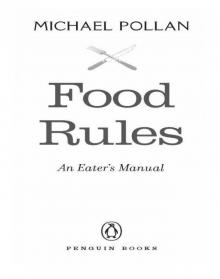 Food Rules
Food Rules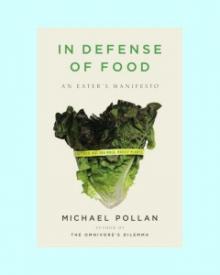 In Defense of Food
In Defense of Food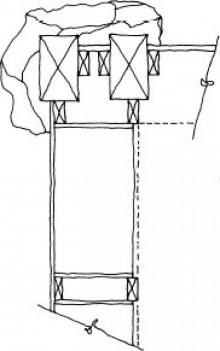 A Place of My Own
A Place of My Own